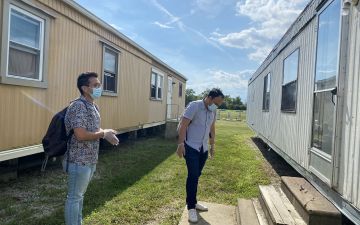In recent months, several human rights groups have pointed to the ways COVID-19 has disproportionately impacted migrant farmworkers since they live in overcrowded conditions, have limited access to healthcare, work in poor conditions, and are often victims of experiencing exploitative labor practices. The coronavirus outbreak has not only exacerbated some of these ongoing issues, but has also shed a light on the lack of protection offered to America’s most essential workers,
In Michigan, farmworkers contribute $104.7 billion annually to the state’s economy, according to The Michigan Farmworker Project. More than 80 percent of these workers are foreign-born Hispanic/Latino, who come from low income backgrounds and lack access to health care. Every year, more than 40,000 of these workers come on a seasonal guest-worker program, officially known as the H-2A program, to fill gaps in the agriculture sector in Michigan.


